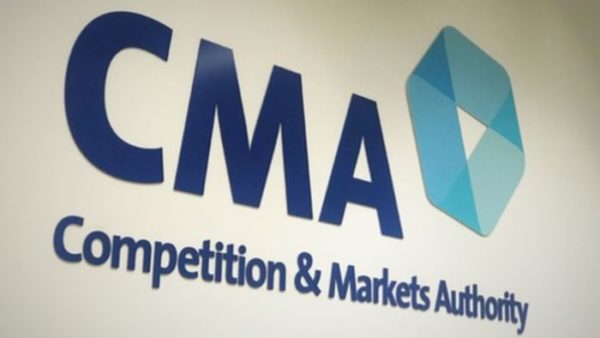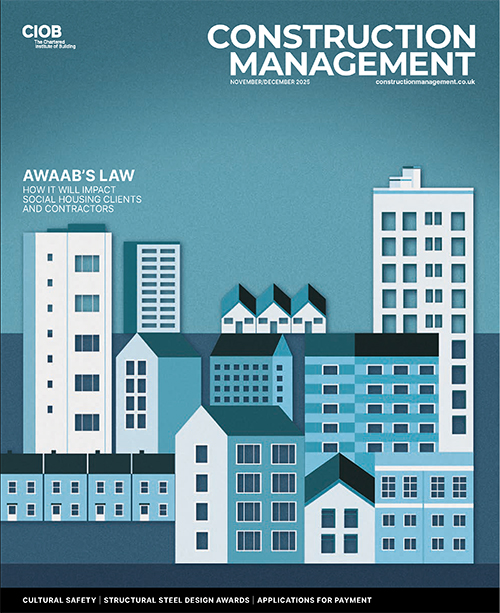In brief
Census plots eco-cities worldwide
A survey of ecocities across the world carried out by Westminister University puts China at the top of the league table with 25 eco-based projects. The UK came second with 18, followed by the US, 17, and Japan, 16. In fifth place was India with 15 and then France 13. There were 174 projects altogther.
New green masters launched
The University of Salford and the Indian Green Building Council (IGBC) are to develop a joint Masters programme in green and sustainable management. The venture has the backing of the Indian government.
Martin joins Coventry University
George Martin, the former head of sustainable development at Willmott Dixon, is to join Coventry University’s Low Impact Buildings Centre (LIBC) in January to carry out research into what works in sustainable construction. Martin has 25 years’ experience in the sector and is associate director at sustainable development charity Forum for the Future.
Clapham is new head of CSCS
CSCS, the industry’s skills card scheme, has a new chairman. Former MP Michael Clapham takes up the role after the resignation of Trevor Walker. Walker has also stepped down as chairman of industry occupational health scheme Constructing Better Health (CBH).
Building Regs to get red tape challenge
Building Regulations and other statutory construction regulations are to be made open to public scrutiny this month. They will be released on the government’s Red Tape Challenge website on 12 January, according to industry sources. This is despite the fact that some parts of the Buildings Regs will be out for consultation in 2012 anyway.
The challenge was set up last year by the government with the objective of reducing some of the 21,000 regulations that cover all aspects of policy across all of UK society. The main aim is to reduce red tape to increase business efficiency.
“Housing, Construction and Planning is the latest sector to be put in the spotlight on the website over five weeks, allowing construction firms, industry figures and the public to scrutinise and comment on any regulations’ use or relevance,” said Jamila Mensah, communications officer at the Department for Communities and Local Government.
“After this period, all comments will be forwarded to a “Star Chamber” chaired by Minister of State for the Cabinet Office, Oliver Letwin, to ultimately rule on whether the regulation should be abolished,” explained Mensah.
www.redtapechallenge.cabinetoffice.gov.uk

CIOB chief executive Chris Blythe
Blythe spearheads modernisation
New qualifications at the centre of sweeping changes for Institute. Michael Glackin reports.
CIOB chief executive Chris Blythe has set out far-reaching plans to modernise the professional body, including changes to membership qualifications. Blythe told CM the changes are essential if the CIOB is to survive: “The CIOB needs to re-engage with employers and adapt to the increasingly global needs of the industry.”
The blueprint is part of the newly unveiled Strategic Plan, which sets out how the Institute should evolve over the next 10 years. “The world is changing fast and professional bodies have to change with it. We don’t want to alienate members of 40 to 50 years, but at the same time we have to adapt and move forward,” says Blythe.
He adds: “An organisation that is controlled by its members is sometimes in danger of going at the pace of the slowest and that is something we have to address. We don’t have the luxury of going at the slowest pace, and we don’t have the luxury of keeping the organisation as it was in the eighties or nineties — it needs to be relevant to 2020, 2030 and 2040.”
The principal thrust of the changes will centre on greater collaboration with employers and developing what Blythe calls “more relevant” qualifications. This would involve introducing a range of qualifications to recognise specialist roles.
“The current MCIOB qualification is a bit all or nothing: you get the full qualification or nothing at all,” explains Blythe. Routes to full membership are already different for people with different academic qualifications and experience, but can involve sitting lengthy exams for those without the relevant degree.
“We’re looking at developing qualifications that will enable people to get recognition to what they are doing in the workplace,” he says. “It might be a diploma or certificate in a particular skill, such as planning and scheduling. The qualification won’t give you chartered status, but it could be used as part of that.”
Blythe adds that the new qualifications would form modules that could enable people to build up a range of credits that would accumulate towards gaining a more formal qualification.
Such a radical overhaul is sure to ignite fears among CIOB members that the institute is “dumbing down” and diluting long-established standards, a charge Blythe dismisses. “It doesn’t mean we’re lowering standards. The changes are about satisfying the needs of employers and people and the different demands they face over their working life,” he says.
He adds: “We can’t be too precious about what exactly chartered means. Too much of the view on standards is about the process and not what people can do at the end of the process. People wrongly assume if a process is difficult it must be of a high standard and benefit to the industry. For years the process has been seen as part of the test and frankly it shouldn’t be.”
The overhaul is partly the result of discussions with large contractors that want staff to have greater expertise in areas such as supply chain integration, BIM, off-site construction and sustainability. But more controversially, Blythe also wants to see formal credit given to some development courses carried out within individual companies.
Changes also reflect the fact that the type of work carried out by members is changing. Whereas 20 years ago the bulk of the members would have worked in contracting now the range is much broader. Membership breaks down as 40% working for contractor bodies; 25% consulting; 20 client or associated organisations like local authority Building Control; 5% academia with the rest retired or working outside the industry.
Speaking last month new CIOB President Alan Crane said his primary focus was to involve employers more with the work of the Institute. He said: “We want to give employers a bigger say in the curriculum. In fact, we want to give them the biggest say they have ever had.
Blythe adds: “Sometimes the relationship between professional bodies and academia can be just too cosy.”
Young professionals give their views on what the new President should do to improve the CIOB, Vox pop, p11

London’s shard gets to the point
London’s shard gets to the point
London’s £800m Shard continues to rise on the city’s Skyline, and when completed in the middle of this year, at 310m and 87 floors high, will be the tallest structure in the EU. The final spire element, whose structure weighs more than 500 tonnes, is in the process of being installed, after having been pre-constructed by Severfield Rowen and Mace in a Yorkshire field. When complete, the development will house speculative offices at lower levels, the five-star Shangri-La hotel in the central portion, and high-end apartments and penthouses at the top. A public viewing gallery will be at Level 72.
Salaries static as economic outlook worsens
Construction professionals will be financially worse off again this year with employers set to offer below inflation wage rises at best, or maintain salary caps for a third successive year.
The bleak news for salaries comes as the outlook for the industry continues to deteriorate amid rising unemployment, public spending cuts, and the prolonged crisis in the Eurozone.
An executive at one multinational firm told CM: “Our plan is to award pay increases this year [2012] because we want to reward staff that have gone without a pay rise for the last two years as we’ve battled the downturn. But the market is still in a bad place, the hoped for recovery hasn’t materialised, so the increase will be some way below the rate of inflation, probably between 1% and 2%.”
With the high rate of UK inflation — which fell slightly to 4.8% in November — this is a substantial pay cut for most construction workers.
Rob Searle, commercial director at construction recruitment group CareerStructure.com, said: “It’s highly unlikely that companies are going to increase salaries at the current rate of inflation, particularly at a time when most sub-sectors of the industry are struggling to grow.”
Meanwhile, a report by CITB-ConstructionSkills, published in December, revealed that more than half of employers believe the next 12 months will provide no business opportunities, while one in 10 fear their business won’t survive the continuing downturn.
Careerstructure.com’s annual survey of sector salaries for 2011 revealed bid managers and structural engineers suffered the greatest drop in salaries last year, with their pay packets falling 13.3% and 10.2% respectively.
The report adds that the average construction worker was £1,164 worse off in real terms last year compared with 2010. Moreover, the report said those currently seeking work can expect their salaries to fall by as much as 5% when moving to a new company.

Paris Moayedi
£1bn waste-to-energy plant plans
A high-tech company chaired by Paris Moayedi, the former Jarvis boss, is looking to raise up to £1bn to build at least 10 new waste-to-energy plants over the
next three years.
Swindon-based Advanced Plasma Power uses a novel proprietary process to convert material that would normally go to landfill into a clean gas that can be used to generate electricity. Advanced Plasma Power chief executive Rolf Stein says this is more efficient than the traditional waste-to-energy processes which incinerate the waste.
“APP uses much smaller plant too, which means that a plant big enough to handle 150,000 tonnes a year of residual waste and to generate enough electricity to power 20,000 homes can be fitted into a 15m high, 10,000m2 shed,” says Stein. “This is about the same size as a retail warehouse commonly located on the edge of towns. The exhaust is a maximum 25m high, compared with the 80m chimneys of most incinerators.”
”This makes it less visually obtrusive,” adds Moayedi, which hopefully should make it easier to get planning permission.

Rolf Stein
Moayedi set up APP as a spin-off from British engineering firm Tetronics, a specialist plasma technology company that he and other private investors bought in 2004 (see box below). Other investors in APP include US private equity fund, Leveraged Green Energy, which has put nearly £20m into the venture.
Building energy-to-waste plants is set to become big business as legislation such as the European Landfill Directive is forcing councils to reduce the amount of rubbish they send to landfill. This has to come down to 35% by 2020, otherwise heavy fines will be imposed. Tax on landfill is also expected to rise to £80 a tonne in 2014 from the current rate of £56 per tonne.
A report published in August by the Associate Parliamentary Resource Group claimed that the UK needed to invest £8bn in waste infrastructure by 2020 if we are to meet our EU targets. However, lack of private finance in the wake of the credit crunch is hampering the construction of new energy-to-waste plants.
Stein says APP hopes to get the go-ahead for the first commercial plant towards the end of 2012. Each plant is expected to cost about £80m. It is in discussions with several waste collection companies and contractors which could become joint venture partners.
The technology is already set to be used in Belgium by Group Machiels, which is planning to dig up decades of rubbish from the biggest landfill site in Flanders, recycle the precious materials and generate energy from what is left using APP’s plasma technology.
The Belgian company aims to mine 500,000 tonnes a year. Half the waste material will be recycled the other half will go into an APP Gasplasma plant, producing energy, Plasmarok — a granite-like by-product — and heat for greenhouses growing vegetables.

A light bulb moment
APP is a spin-off from British plasma specialist Tetronics, which was set up in 1964 to develop commercial applications for plasma technology. These range from recovering precious metals from spent catalytic converters to vitrifying low and intermediate level radioactive waste. Paris Moayedi and other investors bought Tetronics in 2004 and quickly spotted that one such application, which could be commercialised, was turning waste into electricity.
Turning up the heat on landfill waste
Plasma technology is about superheating waste that might otherwise go to landfill in an oxygen-deprived environment, resulting in a clean synthesis gas that can be used to power engines and create electricity.
The process also produces lava that cools to form a black, glass-like substance known as Plasmarok. APP is hoping that this will find use as a building material.
Unlike incineration, the process produces no dioxins and very little ash. Metal-based waste and glass is sorted out of the rubbish before it is fed into the plant. Although plasmas are used around the world for breaking down and removing harmful products from industrial processes, no other firm has been able to use this to turn waste into electricity in engines reliably.
APP is succeeding because it is using the plasma process in tandem with a gasifier, which heats the waste to 850oC before it goes into the plasma chamber containing an arc of lightning between 5,000 and 8,000oC. The intense heat, together with ultraviolet light, breaks down long-chain carbon products such as dioxins. The gas produced is rich in hydrogen and carbon monoxide that is perfect for combustion and electricity generation.
APP has patented this combination of gasifier and plasma chamber in more than 50 countries.











Comments are closed.